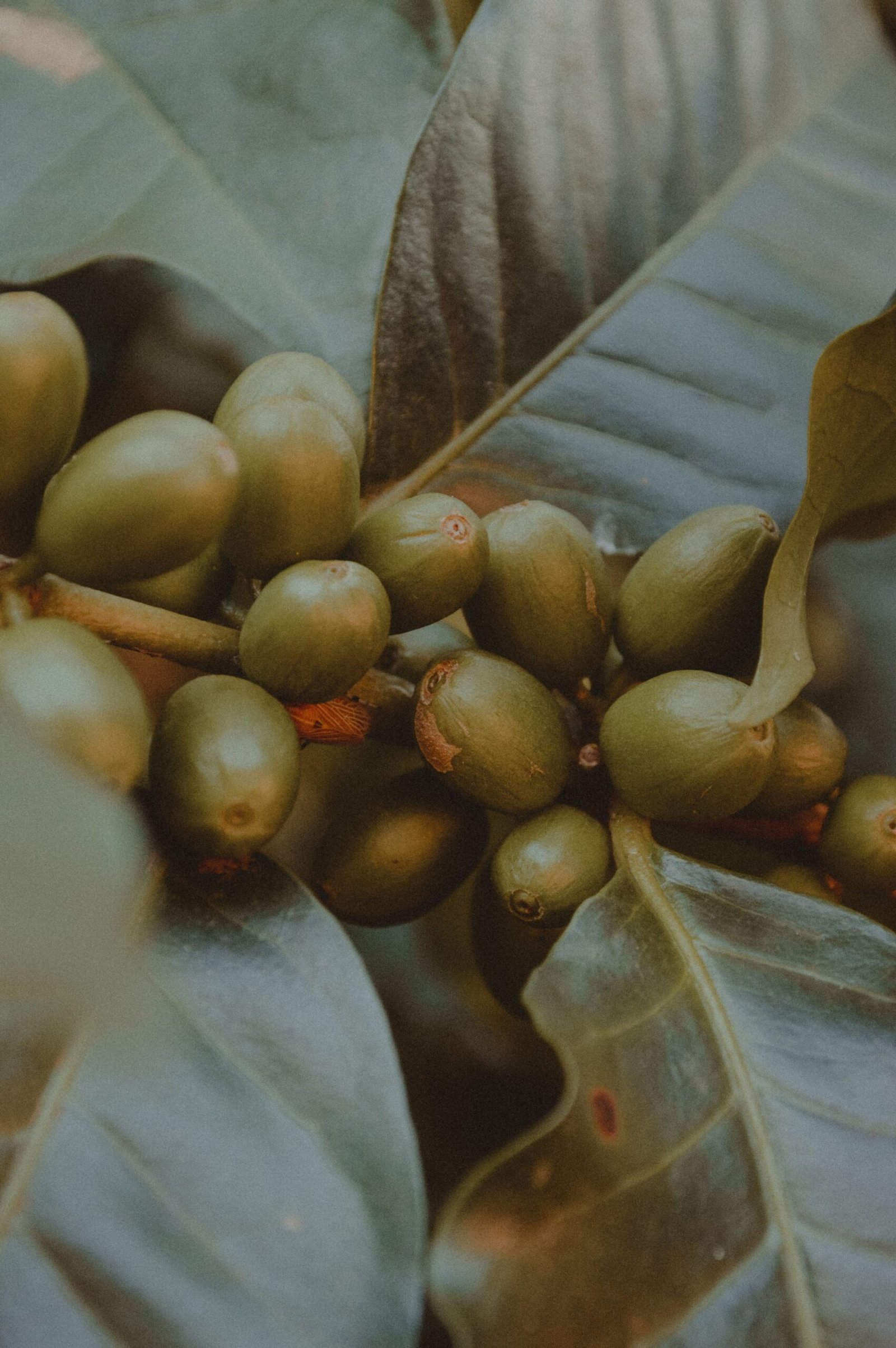Are you looking for a natural way to manage your diabetes? Look no further than fiber-rich fruits! In this article, we will explore the incredible benefits of including fiber-rich fruits in your diet as a means to control diabetes. Not only are these fruits delicious and refreshing, but they also play a crucial role in regulating blood sugar levels and improving overall health. Discover the power of fiber-rich fruits and take control of your diabetes today.
The Importance of Fiber in Diabetes Control
When it comes to managing diabetes, one of the key factors to consider is the consumption of fiber. Fiber plays a crucial role in regulating blood sugar levels and can have a significant impact on the overall management of the condition. In this article, we will explore the importance of fiber in diabetes control and discuss the benefits of consuming fiber-rich fruits as part of a balanced diet.
Fiber and its impact on blood sugar levels
Fiber is a type of carbohydrate that the body cannot digest. Instead of being broken down into sugar like other carbohydrates, fiber passes through the digestive system relatively intact. This unique characteristic of fiber makes it beneficial for individuals with diabetes, as it helps to slow down the absorption of sugar into the bloodstream.
By slowing down the absorption of sugar, fiber can prevent the sudden spikes and drops in blood sugar levels that are often experienced by individuals with diabetes. This can help to regulate blood sugar levels and make it easier to manage the condition effectively.
Benefits of consuming fiber in diabetes management
In addition to its impact on blood sugar levels, consuming fiber has several other benefits for individuals with diabetes. One of the main advantages is its ability to promote feelings of fullness and reduce hunger cravings. Since fiber takes longer to digest, it can help to control appetite and prevent overeating, which is crucial for individuals who need to manage their weight as part of their diabetes management plan.
Another benefit of consuming fiber is its positive impact on heart health. Fiber has been shown to reduce the risk of heart disease by lowering cholesterol levels and improving overall cardiovascular health. This is particularly important for individuals with diabetes, as they are at a higher risk of developing heart-related complications.
Best Fiber-rich Fruits for Diabetes Control
When it comes to incorporating fiber into your diet, one of the easiest and most delicious ways to do so is by consuming fiber-rich fruits. Fruits not only provide essential vitamins and minerals, but they are also packed with valuable dietary fiber. Here are some of the best fiber-rich fruits for diabetes control:
Apples
Apples are a great source of fiber, with an average apple containing around 4 grams of fiber. They are also rich in antioxidants and have a low glycemic index, which means they have a minimal impact on blood sugar levels.
Berries
Berries, such as strawberries, blueberries, and raspberries, are not only delicious but also high in fiber. One cup of berries can provide up to 8 grams of fiber, making them an excellent choice for individuals with diabetes.
Oranges
Oranges are known for their high vitamin C content, but they are also a good source of fiber. A medium-sized orange contains around 4 grams of fiber, making it a nutritious and fiber-rich option for individuals with diabetes.
Pears
Pears are not only juicy and flavorful but also packed with fiber. A medium-sized pear contains approximately 6 grams of fiber, making it an excellent choice for those looking to increase their fiber intake.
Avocado
Although technically a fruit, avocados are a unique addition to this list. They are rich in healthy fats and contain approximately 9 grams of fiber per avocado. Including avocados in your diet can help to increase fiber intake while providing other essential nutrients.
Kiwi
Kiwi is a tropical fruit that is not only tasty but also high in fiber. One medium-sized kiwi contains around 2.5 grams of fiber, making it a nutritious addition to your diabetes management plan.
Mangoes
Mangoes are not only delicious but also an excellent source of fiber. One medium-sized mango contains approximately 5 grams of fiber, providing a sweet and fiber-rich option for individuals with diabetes.
Pomegranates
Pomegranates are not only a great source of antioxidants but also high in fiber. One medium-sized pomegranate can provide up to 7 grams of fiber, making it a nutrient-dense fruit choice for those with diabetes.
Grapes
Grapes are not only a convenient and portable snack but also rich in fiber. One cup of grapes contains around 1.5 grams of fiber, making them a tasty and fiber-packed option for individuals with diabetes.
Bananas
Bananas are a popular fruit worldwide and are also a good source of fiber. A medium-sized banana contains approximately 3 grams of fiber, making it a nutritious choice for individuals looking to increase their fiber intake.

Understanding the Fiber Content in Fruits
When it comes to understanding the fiber content in fruits, it’s essential to distinguish between soluble fiber and insoluble fiber.
Soluble Fiber vs. Insoluble Fiber
Soluble fiber dissolves in water and forms a gel-like substance in the digestive tract. This type of fiber can help to regulate blood sugar levels by slowing down the absorption of sugar into the bloodstream. It can also help to lower cholesterol levels and promote a healthy digestive system.
Insoluble fiber, on the other hand, does not dissolve in water and passes through the digestive system relatively intact. It adds bulk to the stool, making it easier to pass, and can help to prevent constipation and promote regular bowel movements.
Both soluble and insoluble fiber are important for overall health and should be incorporated into a balanced diet. Fruits can provide a combination of both types of fiber, making them an excellent choice for individuals with diabetes.
Fiber content in different fruits
The fiber content in fruits can vary, with some fruits being higher in fiber than others. It’s important to pay attention to the fiber content in different fruits and choose those that are higher in fiber to maximize the benefits.
For example, berries, pears, and apples tend to be higher in fiber compared to tropical fruits like mangoes and bananas. By incorporating a variety of fruits into your diet, you can ensure a diverse range of fiber sources and maximize the health benefits.
Eating Fiber-rich Fruits to Control Blood Sugar Levels
One of the main benefits of consuming fiber-rich fruits is their effect on slowing down sugar absorption. This can be especially beneficial for individuals with diabetes, as it helps to prevent sudden spikes in blood sugar levels.
When you eat a fruit that is high in fiber, the fiber slows down the digestion and absorption of the natural sugars in the fruit. This slower digestion process allows for a gradual release of sugar into the bloodstream, preventing any sudden spikes in blood sugar levels. This steady release of sugar can help individuals with diabetes maintain more stable blood sugar levels throughout the day.
Another way that fiber-rich fruits can help control blood sugar levels is by promoting satiety and reducing the likelihood of overeating. Since fiber takes longer to digest, it can help you feel fuller for longer periods, reducing the temptation to snack on unhealthy foods or consume excessive amounts of high-sugar foods.
Incorporating fiber-rich fruits into your diet can provide a natural and effective way to control blood sugar levels and maintain a healthy lifestyle.

Improving Digestion and Reducing Risk of Diabetes Complications
In addition to blood sugar control, consuming fiber-rich fruits can have several other positive effects on overall health and reduce the risk of diabetes-related complications.
Prevention of constipation and diverticular disease
Fiber plays a crucial role in promoting a healthy digestive system and preventing digestive issues such as constipation and diverticular disease. Insoluble fiber, found in fruits, adds bulk to the stool, making it easier to pass and preventing constipation.
Regular bowel movements are essential for the overall well-being of individuals with diabetes, as constipation can result in discomfort and potentially lead to other complications. By incorporating fiber-rich fruits into your diet, you can help promote regular bowel movements and maintain a healthy digestive system.
Lowering the risk of heart disease and stroke
Individuals with diabetes are at a higher risk of developing heart disease and experiencing cardiovascular-related complications. Consuming fiber-rich fruits can help to reduce this risk by lowering cholesterol levels and promoting a healthy cardiovascular system.
Soluble fiber, found in fruits, has been shown to lower LDL (bad) cholesterol levels and improve overall heart health. By incorporating fiber-rich fruits into your diet, you can help to reduce the risk of heart disease and stroke, which are common complications associated with diabetes.
Incorporating Fiber-rich Fruits Into Your Diet
Now that we understand the importance of fiber-rich fruits in diabetes control, let’s explore some practical ways to incorporate them into your daily diet.
Choosing whole fruits over processed alternatives
When incorporating fiber-rich fruits into your diet, it’s important to choose whole fruits over processed alternatives. Whole fruits provide a higher amount of fiber compared to fruit juices or canned fruits, which often have added sugars and lower fiber content.
By opting for whole fruits, you are not only maximizing the fiber content but also benefiting from the vitamins, minerals, and antioxidants found in the fruit. Whole fruits are a natural and nutritious way to increase your fiber intake while enjoying a variety of flavors.
Including a variety of fiber-rich fruits in your meals
To reap the full benefits of fiber-rich fruits, it’s important to include a variety of them in your meals. Different fruits have different types and amounts of fiber, so by incorporating a diverse range of fruits, you can provide your body with a wide range of nutrients and fiber sources.
For example, you can have a bowl of berries for breakfast, a pear as a mid-morning snack, and an apple with almond butter for an afternoon pick-me-up. By mixing and matching different fruits, you can create delicious and nutritious meals while increasing your fiber intake.
Adding fruits to smoothies, salads, and desserts
Another creative way to incorporate fiber-rich fruits into your diet is by adding them to smoothies, salads, and desserts. Adding fruits to your favorite smoothie recipe can provide a natural source of sweetness while increasing the fiber content.
In salads, fruits like berries, pears, and oranges can add a burst of flavor and provide a refreshing twist. And when it comes to desserts, fruits can be the perfect addition. Consider topping your yogurt or oatmeal with sliced bananas or sprinkling berries on top of a bowl of ice cream for a guilt-free and fiber-rich indulgence.
Finding creative ways to incorporate fiber-rich fruits into your meals and snacks can not only make your diet more enjoyable but also provide you with the necessary nutrients to manage your diabetes effectively.

Considerations for Individuals with Diabetes
While fiber-rich fruits can be extremely beneficial for individuals with diabetes, there are a few considerations to keep in mind.
Monitoring carbohydrate intake alongside fiber consumption
While fiber is a type of carbohydrate, the body does not digest it in the same way as other carbohydrates. It’s important to monitor your carbohydrate intake alongside your fiber consumption to ensure that you are managing your blood sugar levels effectively.
Although fiber does not significantly impact blood sugar levels, it’s still necessary to consider the overall carbohydrate content of your meals and adjust your insulin or medication accordingly. It’s best to work with a healthcare professional or a registered dietitian to develop a meal plan that suits your individual needs and preferences.
Effects of fiber on medication absorption
Fiber can potentially affect medication absorption in the body. If you are taking medications to manage your diabetes or any other condition, it’s important to be aware of any potential interactions.
Certain medications may need to be taken separately from high-fiber meals to ensure maximum absorption. It’s crucial to consult with your healthcare professional to understand how fiber may impact your medication regimen and make any necessary adjustments.
Consulting with a healthcare professional
Before making any significant changes to your diet, it’s always recommended to consult with a healthcare professional or a registered dietitian who specializes in diabetes management. They can provide personalized guidance and support to ensure that you are making informed choices about your dietary fiber intake and overall diabetes control.
Other Ways to Increase Fiber Intake in Diabetes Management
While fiber-rich fruits are a great way to increase your fiber intake, there are other ways to incorporate more fiber into your diet to support diabetes management.
Including whole grains, legumes, and vegetables
In addition to fruits, whole grains, legumes, and vegetables are excellent sources of fiber. Including whole grain products such as oats, brown rice, and whole wheat bread can help to increase your fiber intake.
Legumes such as beans, lentils, and chickpeas are also high in fiber and can be added to soups, salads, or used as a base for vegetarian meals. Finally, incorporating a variety of vegetables into your meals can contribute to overall fiber intake while providing essential vitamins and minerals.
Supplementing with fiber-rich products
If you find it challenging to consume enough fiber-rich foods through your diet alone, there are fiber-rich products available that can help supplement your intake. These may include fiber powders, capsules, or bars that can be incorporated into your daily routine.
It’s important to choose high-quality products and consult with a healthcare professional or a registered dietitian to determine the appropriate dosage and usage. Remember, it’s always best to prioritize whole, natural sources of fiber whenever possible.

Precautions and Potential Side Effects
While consuming fiber-rich fruits and foods can have many benefits, it’s crucial to take precautions and be aware of potential side effects.
Gradually increasing fiber intake to avoid digestive discomfort
Increasing your fiber intake too quickly can lead to digestive discomfort such as bloating, gas, and stomach cramps. To avoid these side effects, it’s important to gradually increase your fiber intake over time and drink plenty of water.
By slowly incorporating more fiber-rich fruits and foods into your diet, your digestive system will have time to adjust, and you can minimize the risk of discomfort. If you experience persistent or severe digestive issues, it’s best to consult with a healthcare professional for further guidance.
Drinking plenty of water along with fiber consumption
Fiber absorbs water in the digestive system, so it’s essential to stay hydrated when consuming fiber-rich fruits and foods. Drinking plenty of water can help prevent constipation and ensure that fiber moves smoothly through the digestive tract.
As a general guideline, aim to drink at least 8 glasses of water per day, or more if you are physically active or live in a hot climate. Staying adequately hydrated will support the proper functioning of your digestive system and overall health.
Conclusion
In conclusion, incorporating fiber-rich fruits into your diet can play a crucial role in diabetes control. The unique properties of fiber help to regulate blood sugar levels, promote satiety, and support a healthy cardiovascular system. By choosing fiber-rich fruits like apples, berries, oranges, pears, and more, you can enhance your diabetes management plan and enjoy a wide range of health benefits.
Remember to monitor your carbohydrate intake alongside fiber consumption, as well as consult with a healthcare professional to tailor your meal plan to your needs. By making fiber-rich fruits a part of a balanced diet and consistently monitoring your blood sugar levels, you can take an active role in managing your diabetes effectively and maintaining optimal health.


